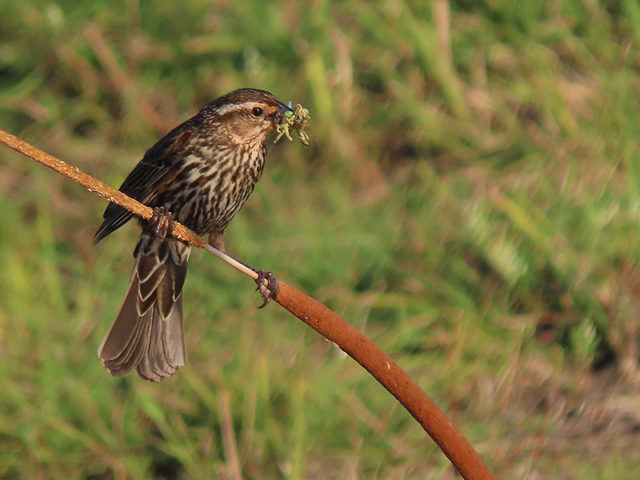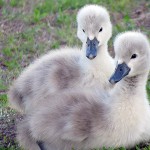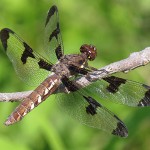I first noticed this scene a few weeks ago on my drive home from work. Each evening, in the soft light of the setting sun, this little family of Canada Geese would leave the safety of their small pond to feed in the on the short grass in a nearby vacant lot. If I was paying attention, I might catch a fleeting glimpse of the geese as I zoomed by on the expressway.

Only a small portion of the geese’s pond was visible from the road. If you were to blink, you might miss it. It took a couple of tries for me to remember to take the early exit that would allow me to stop by for a closer look.
New development and vacant lots surround the man-made pond these geese call home. A quick online search showed that the pond has only been in existence for a few years. Fed by street runoff, it may ultimately intended to be a water feature for some future development.

In the meanwhile, the pond has set feral. Surrounded by regularly mowed vacant lots, the small body of water had developed a perimeter made up of a dense bed of cattail reeds. A nearby tree line provided shade that the geese could access for relief from the intense summertime heat. These are some of the characteristics that likely made this spot attractive to these geese. I doesn’t take much. Adaptable wildlife can make do.
When I got around to my first visit, I found the family of Canada Geese feeding on a grassy mound rising up next to the highway. Two adults and three juveniles were gorging on the manicured grass and weeds. The young bird’s flight feathers could be seen to be developing nicely. This little urban oasis seemed to be meeting the family’s needs quite nicely.



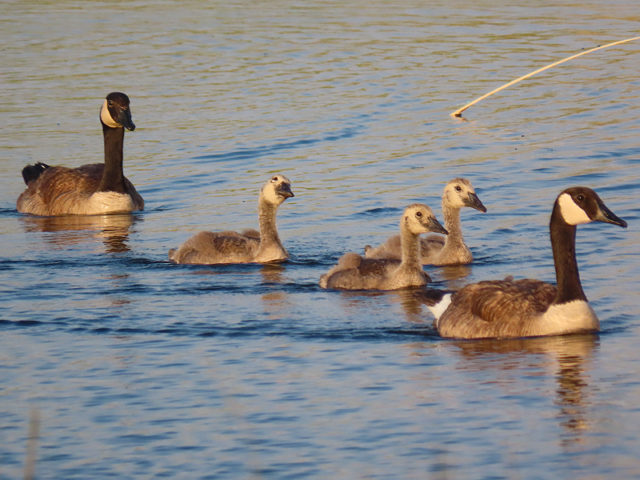
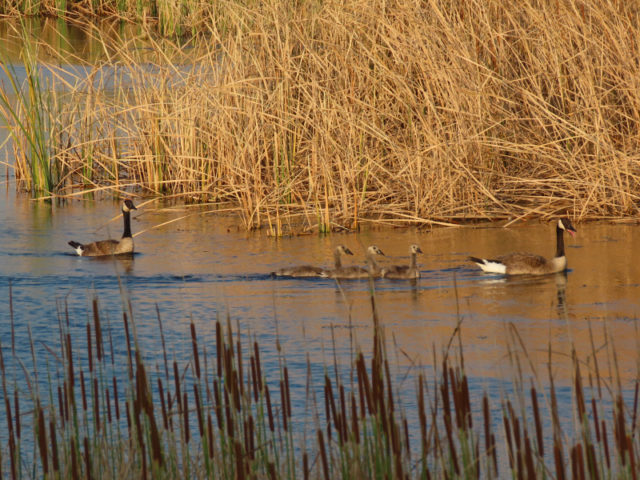
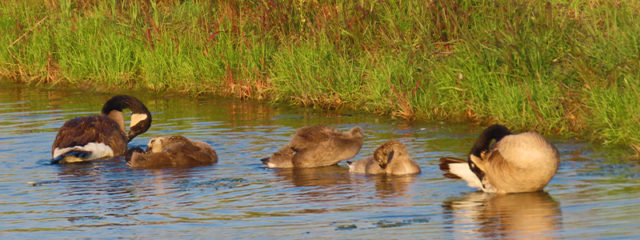
I stopped by several more times over the next couple of weeks. The young geese changed dramatically in the interval between visits. They grew rapidly, and it wasn’t long before their plumage began to more resemble that of the adults.
It was also during one of these stops that I noticed that we were down to just two juveniles. We had lost one overnight–likely to a marauding Coyote, who almost certainly had hungry offspring to feed as well.
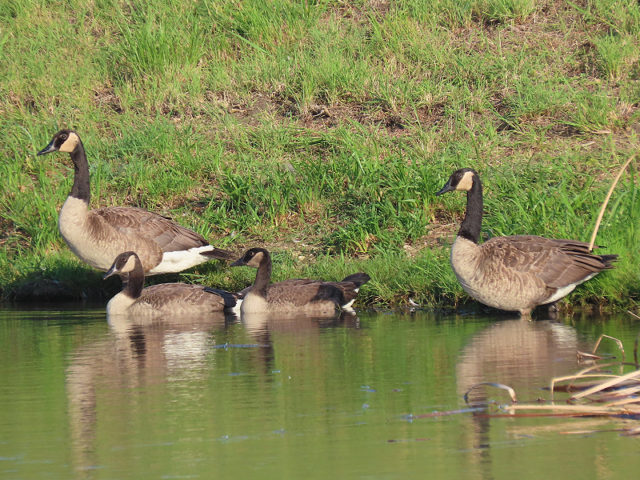
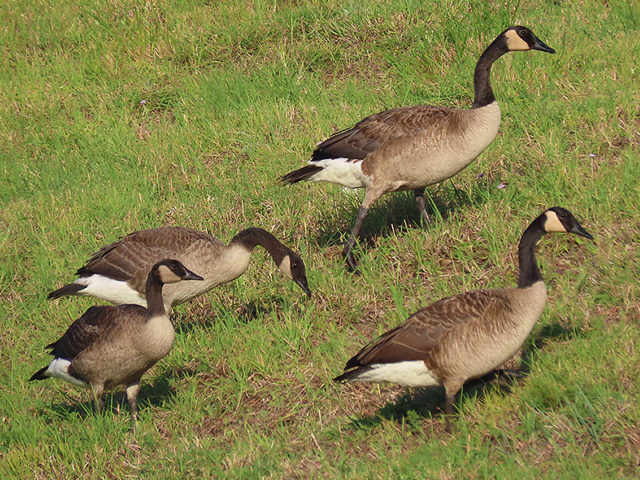
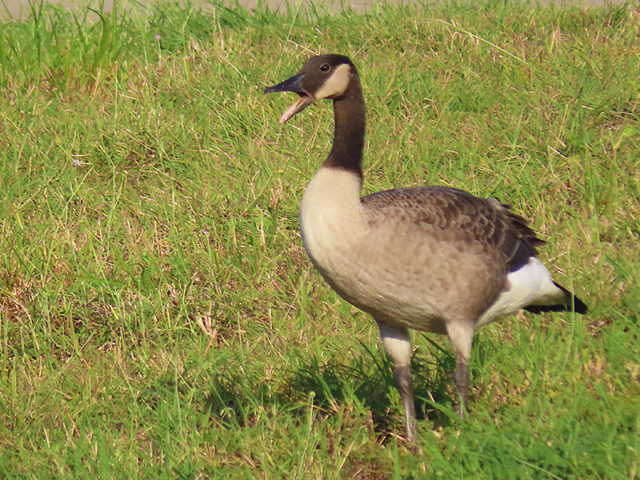
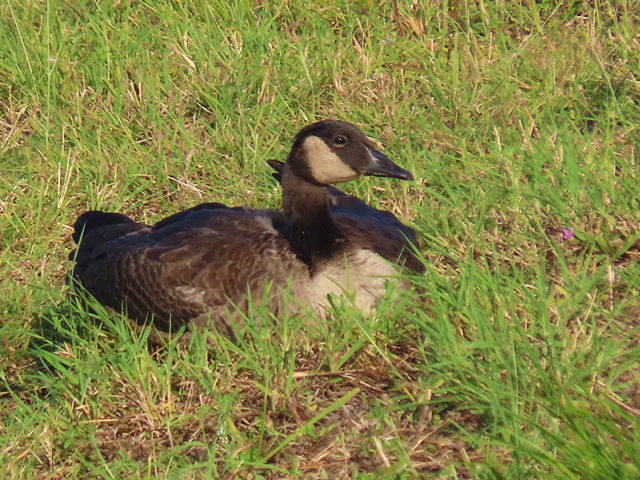
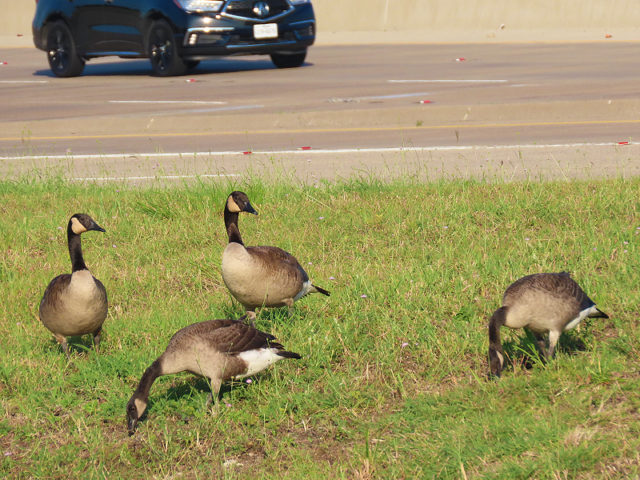
On another visit, I was pleased to discover that second family of waterfowl were also living in the same pond. Here we have an American Coot hen and her five offspring…

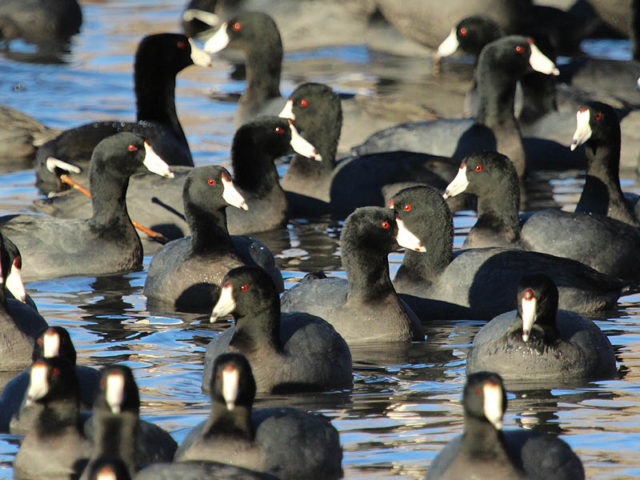
American Coots are very common all across the metroplex. In certain places population density can be quite high. Still, in all of the time I have been keeping this website, I have never before seen baby or juvenile American Coots. This was an exciting first for me!



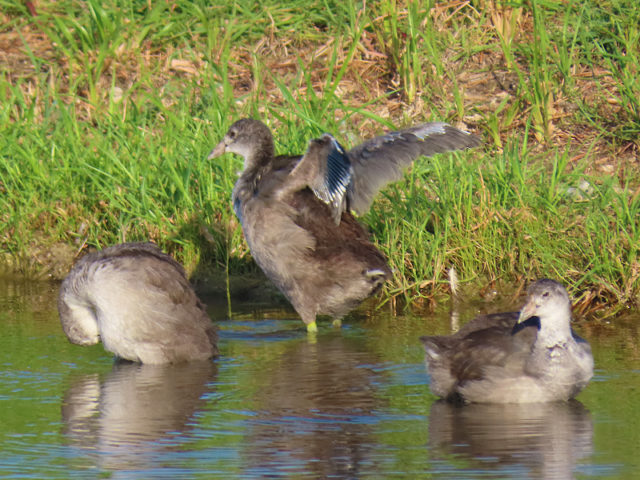
It is likely the thick reed beds around this pond’s perimeter that made this place attractive to the nesting coot. American Coots are unique in their nesting strategies. Here is how their technique is described on the Cornell Lab of Ornitholoy’s All About Birds website…
Nests are almost always built over water on floating platforms and almost always associated with dense stands of living or dead vegetation such as reeds, cattails, bulrushes, sedges, and grasses. Occasionally, the nest may be built on the edge of a stand of vegetation, where it is clearly visible.

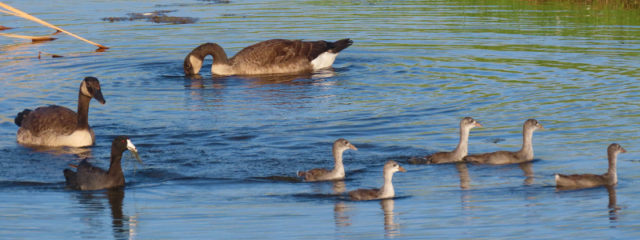
and actively chased the coots away
A few other critters call this modest and easy to dismiss pond home as well. Eastern Cottontails emerge from the brush each evening to join the geese in the eating of green grass. Meanwhile Red-winged Blackbirds call out and jockey for food and other resources among the reeds.


